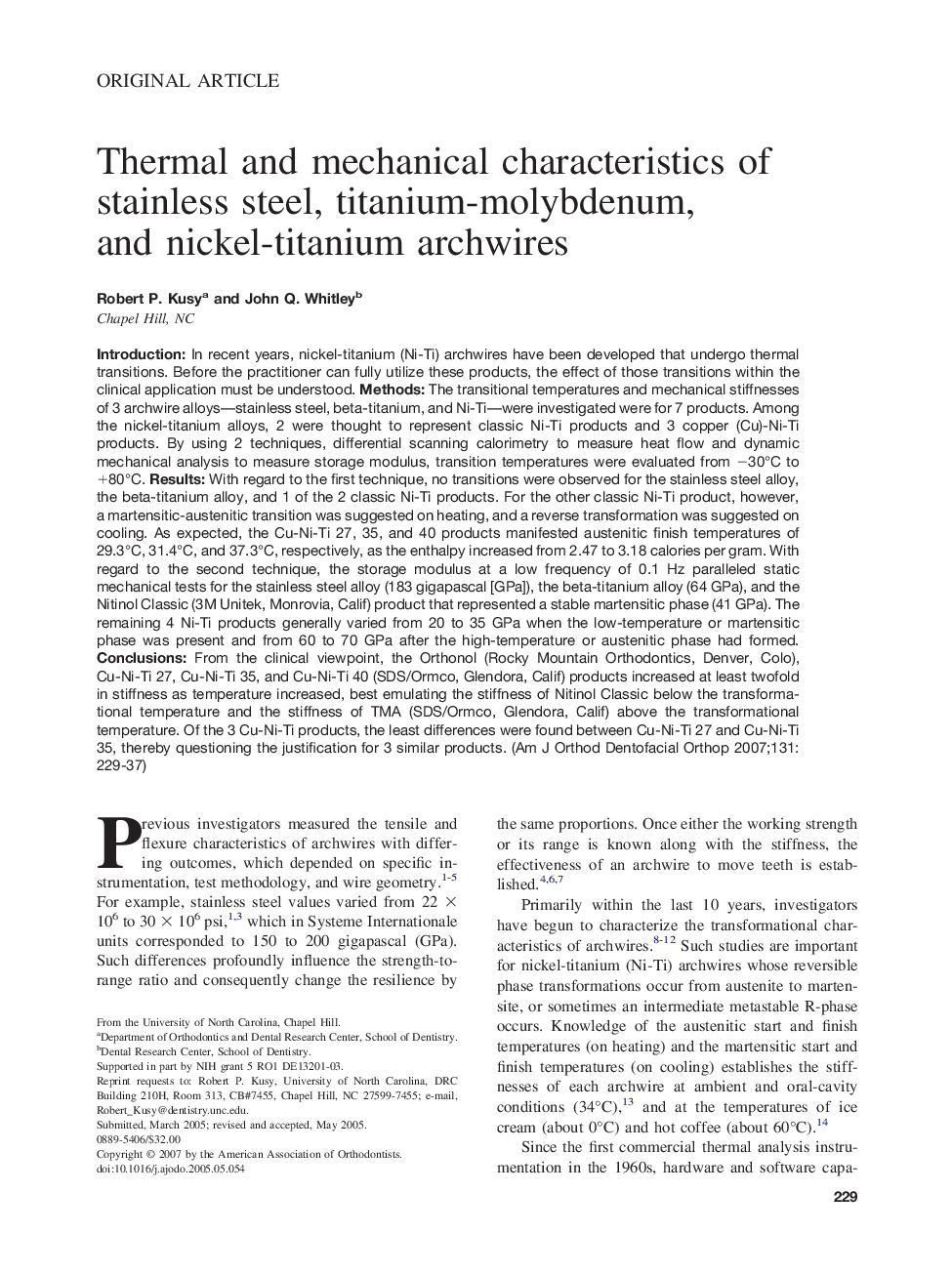| Article ID | Journal | Published Year | Pages | File Type |
|---|---|---|---|---|
| 3119304 | American Journal of Orthodontics and Dentofacial Orthopedics | 2007 | 9 Pages |
Introduction: In recent years, nickel-titanium (Ni-Ti) archwires have been developed that undergo thermal transitions. Before the practitioner can fully utilize these products, the effect of those transitions within the clinical application must be understood. Methods: The transitional temperatures and mechanical stiffnesses of 3 archwire alloys—stainless steel, beta-titanium, and Ni-Ti—were investigated were for 7 products. Among the nickel-titanium alloys, 2 were thought to represent classic Ni-Ti products and 3 copper (Cu)-Ni-Ti products. By using 2 techniques, differential scanning calorimetry to measure heat flow and dynamic mechanical analysis to measure storage modulus, transition temperatures were evaluated from −30°C to +80°C. Results: With regard to the first technique, no transitions were observed for the stainless steel alloy, the beta-titanium alloy, and 1 of the 2 classic Ni-Ti products. For the other classic Ni-Ti product, however, a martensitic-austenitic transition was suggested on heating, and a reverse transformation was suggested on cooling. As expected, the Cu-Ni-Ti 27, 35, and 40 products manifested austenitic finish temperatures of 29.3°C, 31.4°C, and 37.3°C, respectively, as the enthalpy increased from 2.47 to 3.18 calories per gram. With regard to the second technique, the storage modulus at a low frequency of 0.1 Hz paralleled static mechanical tests for the stainless steel alloy (183 gigapascal [GPa]), the beta-titanium alloy (64 GPa), and the Nitinol Classic (3M Unitek, Monrovia, Calif) product that represented a stable martensitic phase (41 GPa). The remaining 4 Ni-Ti products generally varied from 20 to 35 GPa when the low-temperature or martensitic phase was present and from 60 to 70 GPa after the high-temperature or austenitic phase had formed. Conclusions: From the clinical viewpoint, the Orthonol (Rocky Mountain Orthodontics, Denver, Colo), Cu-Ni-Ti 27, Cu-Ni-Ti 35, and Cu-Ni-Ti 40 (SDS/Ormco, Glendora, Calif) products increased at least twofold in stiffness as temperature increased, best emulating the stiffness of Nitinol Classic below the transformational temperature and the stiffness of TMA (SDS/Ormco, Glendora, Calif) above the transformational temperature. Of the 3 Cu-Ni-Ti products, the least differences were found between Cu-Ni-Ti 27 and Cu-Ni-Ti 35, thereby questioning the justification for 3 similar products.
